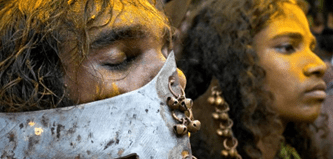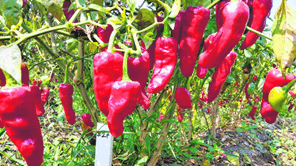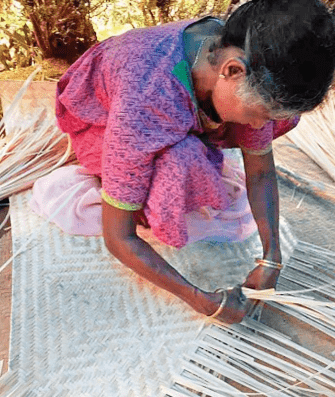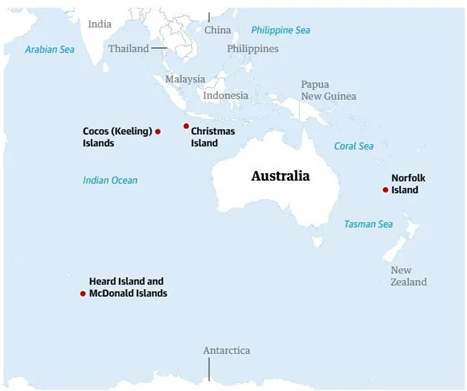Bharani Festival
Syllabus: GS1/Culture
- Kodungalloor Bharani is one of Kerala’s most renowned and vibrant festivals, held annually at the Sree Kurumba Bhagavathy Temple in Kodungalloor, Thrissur.
- Celebrated in the Malayalam month of Meenam (March-April), the festival is steeped in mysticism and tradition.
- At the heart of the celebration is a powerful spiritual atmosphere, marked by the presence of numerous Oracles—known locally as Komaram or Velichappadu—dressed in striking red attire.
- The Bharani festival honors the birth of Goddess Bhadrakali, who, according to legend, emerged from the third eye of Lord Shiva.
- She was created to vanquish the demon Darika, embodying divine fury and justice.

Which of the following statements regarding the Kodungalloor Bharani festival is/are correct?
- The festival is associated with the worship of Bhadrakali, who is believed to have been born from Lord Vishnu’s Sudarshana Chakra to annihilate the demon Darika.
- It is characterized by the participation of oracles (Komaram or Velichappadu), who perform ritualistic dances and often enter trance-like states.
- The Kodungalloor Bharani is celebrated in the Malayalam month of Karkidakam, which corresponds to the peak of the monsoon season.
- The festival is rooted in a Tantric tradition and has historically included symbolic rituals of blood sacrifice.
Select the correct answer using the code below:
- 1 and 3 only
B. 2 and 4 only
C. 1, 2, and 4 only
D. 2, 3, and 4 only
Answer: B. 2 and 4 only
Explanation:
Statement 1 — Incorrect: Bhadrakali, according to traditional belief, was born from the third eye of Lord Shiva, not from Lord Vishnu’s Sudarshana Chakra. Her purpose was to destroy the demon Darika, symbolizing the triumph of divine feminine power over evil.
Statement 2 — Correct: The presence of oracles (Komaram or Velichappadu) is one of the defining features of the festival. They dress in red, wield swords, and often perform frenzied dances, sometimes entering trance-like states as a medium of the goddess.
Statement 3 — Incorrect: The festival takes place in the Malayalam month of Meenam (March-April), not Karkidakam (July-August), which is the monsoon season and associated with different religious observances like Ramayana month rituals.
Statement 4 — Correct: The festival has Tantric roots and historically involved symbolic rituals, including animal or symbolic blood sacrifice, which are believed to represent offerings to the fierce goddess. Many of these practices have been toned down in modern times.
GI Tag to Chapata Chilli

In News:
- The Warangal Chapata Chilli, popularly known as Tomato Chilli, from Telangana has recently been awarded the Geographical Indication (GI) tag by the GI Registry.
About Warangal Chapata Chilli (Tomato Chilli):
- Noted for its vibrant red colour and low pungency, making it distinct from other chilli varieties.
- Widely sought after for its high content of natural colouring agent, specifically paprika oleoresin, used in food and cosmetic industries.
The variety includes three distinct fruit types:
- Single Patti
- Double Patti
- Odalu
With reference to the Warangal Chapata Chilli, recently granted the Geographical Indication (GI) tag, consider the following statements:
- It is primarily cultivated for its high capsaicin content, which contributes to its intense pungency.
- The chilli is a significant source of paprika oleoresin, a natural colouring agent used in various industries.
- It includes distinct morphological fruit types, namely Single Patti, Double Patti, and Odalu.
- Its cultivation is limited to the high-altitude tribal belts of Eastern Ghats in Telangana.
Which of the above statements is/are correct?
A. 1 and 4 only
B. 2 and 3 only
C. 2, 3, and 4 only
D. 1, 2, and 3 only
Answer: B. 2 and 3 only
Explanation:
Statement 1 — Incorrect:
Warangal Chapata chilli is not known for high capsaicin or pungency. In fact, one of its key traits is its low pungency, which differentiates it from other chilli varieties. Thus, the statement is factually incorrect.
- Statement 2 — Correct:
The chilli is in high demand due to the presence of paprika oleoresin, a natural colouring agent used in the food, cosmetic, and pharmaceutical industries. This makes the variety economically significant beyond its culinary usage. - Statement 3 — Correct:
The three distinct fruit types of this chilli variety—Single Patti, Double Patti, and Odalu—refer to the physical/morphological characteristics of the fruit, and are used by cultivators to distinguish between sub-types. - Statement 4 — Incorrect:
The cultivation of Warangal Chapata chilli is not limited to high-altitude tribal belts or the Eastern Ghats. It is mainly cultivated in the plains of Telangana, particularly around Warangal, which is known for its fertile soils and chilli production.
GI Tag for Kannadippaya
Syllabus :GS 3/Economy /S&T
In News:
The traditional Kannadippaya has been awarded the Geographical Indication (GI) tag, granting it legal protection, market recognition, and global visibility.

About Kannadippaya (“Mirror Mat”):
- Kannadippaya, meaning “mirror mat”, is a traditional tribal handicraft of Kerala, known for its fine texture and reflective finish.
- It is woven using the soft inner layers of reed bamboo, primarily from species such as Teinostachyum wightii and Ochlandra spp.
- The mat possesses distinct thermal properties—warm in winter and cool in summer—making it both functional and environmentally adaptive.
- The craft is traditionally practiced and preserved by tribal communities such as the Oorali, Mannan, Muthuva, Malayan, and Kadar, across the districts of Idukki, Thrissur, Ernakulam, and Palakkad.
Historically, these mats were offered to kings as symbols of respect and honor by the tribal artisans, reflecting the cultural significance and craftsmanship involved.
Consider the following statements with reference to Kannadippaya, which recently received the Geographical Indication (GI) tag:
- It is a traditional mat woven from the coarse outer layers of reed bamboo, offering high durability but little thermal insulation.
- The craft is predominantly preserved by tribal communities in the Western Ghats region of Kerala.
- The species Teinostachyum wightii and Ochlandra spp. are used in the making of Kannadippaya, both of which are endemic to the Nilgiri Biosphere Reserve.
- The mat derives its name from its ability to reflect heat, making it ideal for desert regions.
Which of the statements given above is/are correct?
A. 2 only
B. 2 and 3 only
C. 1, 3, and 4 only
D. 2, 3, and 4 only
Answer: B. 2 and 3 only
Explanation:
Statement 1 — Incorrect:
Kannadippaya is woven from the soft inner layers of reed bamboo, not the coarse outer layers. These inner layers contribute to its smooth texture, mirror-like sheen, and thermal insulation properties, offering warmth in winter and cooling in summer.
Statement 2 — Correct:
The craft is preserved by tribal groups such as the Oorali, Mannan, Muthuva, Malayan, and Kadar, all of whom are located in the Western Ghats region of Kerala (districts like Idukki, Palakkad, Thrissur, and Ernakulam). So this is factually correct.
Statement 3 — Correct:
Both Teinostachyum wightii and Ochlandra spp. are bamboo species found in the Western Ghats and parts of the Nilgiri Biosphere Reserve. They are known for their suitability in eco-friendly crafts. So this is technically accurate.
Statement 4 — Incorrect:
The name “Kannadippaya” translates to “mirror mat”, due to its reflective appearance, not because it reflects heat. Also, it is not suited for desert regions but rather for humid tropical climates, offering temperature regulation indoors.
Heard and McDonald Islands
Syllabus: GS1/Places in News
Context:
Under the so-called “Liberation Day Tariffs”, former U.S. President Donald Trump imposed a baseline 10% tariff on all trading partners. Notably, this list included even the uninhabited Heard and McDonald Islands, owing to their status as an Australian external territory.

About Heard and McDonald Islands:
- TerritorialStatus:
Uninhabited volcanic islands under the sovereignty of Australia, included in trade measures due to their territorial classification. - Geographic Location:
Situated in the Southern Indian Ocean, approximately 1,700 km from Antarctica and 4,100 km southwest of mainland Australia. - Volcanic Significance:
Host to the only active sub-Antarctic volcanoes, including Big Ben on Heard Island and the volcano on McDonald Island. - Geological Importance:
Serve as a critical site for studying plate tectonics, oceanic crust formation, glacial dynamics, and climate change impacts. - Ecological Uniqueness:
Among the few remaining pristine ecosystems globally, with no introduced species. The islands support large populations of seabirds and marine mammals. - Wildlife Highlights:
Habitat for several endemic species, including the Heard Island cormorant and an endemic subspecies of sheathbill. Crucial breeding grounds for seals, petrels, penguins, and albatrosses.
Conservation Status:
- Protected under Australia’s Environment Protection and Biodiversity Conservation Act, 1999
- Recognized as a UNESCO World Heritage Site
- Strict legal restrictions against unauthorized activities or environmental disruption
With reference to the Heard and McDonald Islands, consider the following statements:
- They are the only known location in the sub-Antarctic region where active glaciation and active volcanism co-exist naturally.
- Despite being uninhabited, they have been included in international trade measures due to their status as sovereign U.S. territories.
- The islands are ecologically significant due to the absence of introduced species and are considered one of the last pristine island ecosystems.
- They are protected under both domestic Australian legislation and international conventions, including the Ramsar Convention on Wetlands.
Which of the statements given above is/are correct?
- 1 and 3 only
B. 1, 2, and 4 only
C. 1, 3, and 4 only
D. 2 and 4 only
Answer: A. 1 and 3 only
Explanation:
Statement 1 — Correct:
- The Heard and McDonald Islands are unique globally for exhibiting both active glaciation and active volcanism in the sub-Antarctic.
- This rare combination makes them a vital site for studying Earth’s geological and climate systems.
Statement 2 — Incorrect:
- While they were included in Trump’s tariff list, the islands are an external Australian territory, not U.S. territory.
- Their inclusion in trade measures stemmed from their territorial status under Australia, not due to any U.S. sovereignty.
Statement 3 — Correct:
- The islands are one of the last remaining pristine island ecosystems.
- Notably, no non-native (introduced) species have been recorded, preserving their ecological integrity—an extremely rare feature in global island ecosystems.
Statement 4 — Incorrect:
- Although the islands are protected under the Environment Protection and Biodiversity Conservation Act (1999) and are UNESCO World Heritage Sites, they are not listed under the Ramsar Convention, which is specific to wetlands of international importance.
- The islands’ significance lies more in volcanic and glacial features than wetlands.
India Ranks 36 in Network Readiness Index
Syllabus: Indexes
- India has demonstrated significant advancements in the adoption and integration of frontier technologies, as reflected in its improved ranking on the global Network Readiness Index.
- According to the 2025 Technology and Innovation Report by UNCTAD, India now ranks 36th out of 170 nations, a notable rise from 48th in 2022.
- This progress stems from enhancements in ICT deployment, research & development (R&D), industrial capacity, and finance, with a strong emphasis on artificial intelligence (AI) and nanotechnology.
- The report highlights India as a leading developing nation surpassing expectations, particularly in AI innovation and technology readiness.
Key Highlights
India’s Global Standing
Rank: 36th on the ‘Readiness for Frontier Technologies’ index (improved from 48th in 2022).
Performance Factors: Assessed based on ICT deployment, human capital, R&D, industrial capacity, and financial access.
Human Capital & Technological Growth
- India, along with Bhutan, Morocco, Moldova, and Timor-Leste, has significantly improved in human capital development, driven by increased schooling years and high-skill employment.
- Developing nations such as India, China, Brazil, and the Philippines have exceeded expectations in technology readiness, despite lower per capita GDPs.
India’s Role in AI Innovation
- India is a key global player in AI, contributing extensively to AI-related scientific research.
- The country ranks 2nd globally in the number of GitHub developers (13 million), behind the United States.
- India is emerging as a significant contributor to Generative AI (GenAI) projects.
Private AI Investments
- India ranks 10th globally in private AI investments, with USD 1.4 billion in 2023, behind China and the United States.
AI & Employment Transformation
- While AI may lead to job displacement, it also holds the potential to create new industries and employment opportunities.
- The report stresses reskilling and upskilling as critical measures to prepare the workforce for an AI-driven future.
Strategic Policy Interventions
The India AI Mission has been launched to strengthen India’s AI ecosystem by:
- Enhancing AI education and training programs
- Reducing barriers for AI adoption in smaller cities
- Promoting AI research and industry collaboration
Conclusion
- India’s advancement in frontier technologies and AI development underscores its growing global influence in innovation and digital transformation.
- While challenges remain in areas such as ICT readiness and human capital, policy interventions and investments are shaping India into a technological powerhouse.
With reference to India’s performance in the 2025 UNCTAD Technology and Innovation Report, consider the following statements:
- India ranks among the top 5 countries globally in ICT deployment, owing to rapid digital infrastructure expansion.
- The improvement in India’s human capital index is attributed to both increased average years of schooling and growth in high-skill employment.
- India is recognized as one of the top three global contributors to private investment in Artificial Intelligence (AI) in 2023.
- The India AI Mission includes efforts to promote AI research, improve training accessibility, and reduce regional imbalances in AI adoption.
Which of the statements given above is/are correct?
A. 1 and 3 only
B. 2 and 4 only
C. 2, 3, and 4 only
D. 1, 2, and 4 only
Answer: B. 2 and 4 only
Explanation:
Statement 1 – Incorrect
- India does not rank in the top 5 globally in ICT deployment.
- In fact, it ranks 99th in terms of ICT readiness, indicating significant scope for improvement in digital infrastructure and access.
Statement 2 – Correct
- The report clearly mentions that India’s improvement in human capital stems from increased years of schooling and higher levels of high-skill employment.
Statement 3 – Incorrect
- India is ranked 10th globally in terms of private AI investment in 2023 (USD 1.4 billion).
- The top contributors remain the United States and China, not India.
Statement 4 – Correct
The India AI Mission includes:
- Promoting AI research
- Improving access to AI education and training
- Reducing barriers for adoption in smaller cities
These align with the goals to build an inclusive AI ecosystem.
World Health Day 2025
Syllabus:Science
Date: April 7, 2025
Theme: Healthy Beginnings, Hopeful Futures
What is World Health Day?
- World Health Day is observed every year on April 7 to mark the founding of the World Health Organization (WHO) in 1948.
- It serves as a global platform to raise awareness about critical public health issues and inspire action from governments, health institutions, and individuals worldwide.
- Each year, WHO selects a theme that highlights urgent health priorities, promoting collaboration and policy-level engagement across countries.

Theme 2025: Healthy Beginnings, Hopeful Futures
- This year’s theme focuses on maternal and newborn health, underscoring the importance of starting life with care and safety. The campaign aims to:
- Reduce preventable maternal and neonatal deaths
- Improve health outcomes during pregnancy, childbirth, and the postnatal period
- Promote equitable, quality healthcare for mothers and infants, especially in low-resource areas
Core message: A healthy life begins with a safe birth and continuous maternal care.
The Global Urgency
WHO data highlights a pressing crisis in maternal and newborn health:
- Around 300,000 women die each year from pregnancy-related complications
- Two million newborns die within their first month of life
- Two million stillbirths occur annually, many of which are preventable
- One preventable maternal or infant death happens every seven seconds
Current trends show:
- 80 percent of countries are not on track to meet the 2030 target for reducing maternal mortality
- 33 percent of countries are expected to miss targets for reducing newborn deaths
Why It Matters
Improving maternal and newborn health is essential for:
- Lowering infant and maternal mortality rates
- Building healthier families and communities
- Strengthening economic development and social stability
Key Strategies to Improve Outcomes
WHO recommends a set of proven interventions to boost maternal and newborn health:
- Antenatal care: Regular check-ups to identify and manage complications early
- Nutrition and lifestyle education: Avoiding tobacco and alcohol, encouraging balanced diets
- Mental health support: Addressing postpartum depression and stress
- Skilled birth attendance: Ensuring qualified health professionals assist during childbirth
- Postnatal services: Providing newborn care, breastfeeding support, vaccinations, and maternal recovery
Global Call to Action
The 2025 campaign calls on stakeholders to:
- Integrate maternal and newborn health into national health policies
- Invest in healthcare infrastructure, especially in underserved regions
- Raise public awareness through education and media engagement
- Build partnerships across sectors to improve healthcare access and delivery
Conclusion
- World Health Day 2025 is not just a commemoration—it is a call to action. Ensuring Healthy Beginnings is the first step toward building Hopeful Futures.
- No woman or child should lose their life to preventable causes. Together, we can create a world where every mother and newborn has the right to a healthy start.
Consider the following statements with reference to maternal and newborn health statistics presented by WHO:
- More than 2 million newborns die each year within their first month of life.
- Stillbirths are often preventable and number over 2 million annually.
- A preventable maternal or infant death occurs every 30 seconds globally.
Which of the statements given above is/are correct?
A. 1 and 2 only
B. 2 and 3 only
C. 1 and 3 only
D. 1, 2, and 3
Answer: A. 1 and 2 only
Explanation:
Statement 3 is incorrect. The text specifies that one preventable maternal or infant death occurs every 7 seconds, not 30. Statements 1 and 2 are supported by WHO data cited for the 2025 campaign.
Axiom Mission 4
- Group Captain Shubhanshu Shukla, an Indian Air Force pilot and astronaut, will represent India as the pilot of Axiom Mission 4 (Ax-4)—a landmark international private spaceflight mission to the International Space Station (ISS).
About Axiom Space Missions
- Axiom Mission 1 (Ax-1): The first fully private crewed mission to the ISS.
- Axiom Mission 2 (Ax-2): Included the first Saudi female astronaut.
- Axiom Mission 3 (Ax-3): Featured the first astronauts from Turkey and the European Space Agency (ESA) on a commercial flight.
- Axiom Mission 4 (Ax-4): Scheduled for 2024, the mission marks India’s debut in a commercial human spaceflight collaboration.
Ax-4 Crew Composition
Commander: Peggy Whitson (Former NASA astronaut)
Pilot: Shubhanshu Shukla (India)
Mission Specialists:
- Sławosz Uznański-Wiśniewski (Poland)
- Tibor Kapu (Hungary)
- The crew will spend 14 days aboard the ISS, conducting over 60 scientific experiments in microgravity.

ISRO’s Contribution to Ax-4
- Under this mission, ISRO (Indian Space Research Organisation) will contribute a suite of microgravity research experiments, focusing on:
- Human physiology in space: Effects on cognitive functions and visual interaction with digital screens
- Skeletal muscle changes: Investigating space-induced muscle dysfunction
- Agricultural biology: Plant growth and seed germination behavior in microgravity
Global Collaboration
- Ax-4 exemplifies international partnership in space science, with active participation from:
- India (ISRO)
- United States (NASA)
- Europe (ESA support for Poland and Hungary)
- This cooperation advances our understanding of life sciences in space and strengthens India’s growing presence in human spaceflight research.
Significance
- The mission is a milestone in India’s space journey:
- It marks India’s first astronaut aboard a commercial international spaceflight.
- It showcases ISRO’s scientific research on a global platform.
- It reinforces the value of international collaboration in advancing space-based science and innovation.
With reference to the Axiom Mission 4 (Ax-4), consider the following statements:
- It is the first human spaceflight mission involving collaboration between ISRO, NASA, and ESA.
- The mission will carry out scientific research exclusively in the field of biotechnology.
- Ax-4 will be commanded by an Indian astronaut for the first time.
Which of the statements given above is/are correct?
A. 1 only
B. 1 and 2 only
C. 3 only
D. None
Answer: A. 1 only
Explanation:
- Statement 1 is correct: Ax-4 brings together ISRO, NASA, and ESA in a shared microgravity research initiative, marking a collaborative milestone.
- Statement 2 is incorrect: Research on Ax-4 spans multiple domains, including human health, cognitive science, muscle physiology, and agriculture—not limited to biotechnology.
- Statement 3 is incorrect: The mission is commanded by Peggy Whitson, a former NASA astronaut; Shubhanshu Shukla is the pilot, not the commander.
Tipitaka
Syllabus: GS1/ Art & Culture
In News
- Prime Minister Narendra Modi was presented with ‘The World Tipitaka: Sajjhaya Phonetic Edition’ by the Prime Minister of Thailand, Paetongtarn Shinawatra, as part of a diplomatic and cultural exchange.
About the Tipiṭaka
- The Tipiṭaka, meaning “Three Baskets” in Pāli, is the foundational scripture of Theravāda Buddhism, comprising three major divisions of the Buddha’s teachings:
- Vinaya Piṭaka (Basket of Discipline):
- Contains rules, procedures, and guidelines for the monastic community (bhikkhus and bhikkhunis).
Emphasizes ethical conduct and communal harmony.
Sutta Piṭaka (Basket of Discourses):
- A collection of the Buddha’s sermons and dialogues with disciples and lay followers.
- Presents core teachings such as the Four Noble Truths and the Eightfold Path.
Abhidhamma Piṭaka (Basket of Higher Doctrine):
- Philosophical and psychological analysis of the Dhamma.
- Offers a detailed framework for understanding consciousness and mental phenomena.
Historical Background
- The Tipiṭaka was compiled orally after the Buddha’s Mahāparinibbāna (passing away) in the 5th century BCE.
- The first compilation took place at the First Buddhist Council, held in Rajagaha (modern-day Rajgir, Bihar, India) under the patronage of King Ajātasattu.
With reference to the Tipiṭaka, consider the following statements:
- The Vinaya Piṭaka primarily addresses metaphysical doctrines in Buddhism.
- The Sutta Piṭaka contains the teachings of the Buddha delivered in narrative and dialogue form.
- The Abhidhamma Piṭaka was compiled during the lifetime of the Buddha.
Which of the statements given above is/are correct?
A. 2 only
B. 1 and 3 only
C. 2 and 3 only
D. 1, 2 and 3
Answer: A. 2 only
Explanation:
Statement 1 is incorrect: The Vinaya Piṭaka is focused on monastic rules and disciplinary codes, not metaphysics.
Statement 2 is correct: The Sutta Piṭaka contains discourses of the Buddha, often structured as conversations or narratives.
Statement 3 is incorrect: The Abhidhamma Piṭaka was compiled after the Buddha’s death, likely starting from the Third Buddhist Council onwards.
Baku to Belem Roadmap
Syllabus: GS2/ IR
In News
- India has urged BRICS nations to rally behind the ‘Baku to Belém Roadmap’, a strategic climate finance initiative aimed at mobilizing USD 1.3 trillion annually to help developing countries achieve their Nationally Determined Contributions (NDCs).
What is the Baku to Belém Roadmap?
- Adopted during COP29 (2024), the Baku to Belém Roadmap serves as a framework to guide global climate negotiations and action, focusing on:
- Establishing a New Collective Quantified Goal (NCQG) on climate finance post-2025.
- Enhancing the predictability, adequacy, and accessibility of climate finance for the Global South.
- Supporting low-carbon and climate-resilient development
- Facilitating the effective implementation of countries’ NDCs under the Paris Agreement.
Why BRICS Matters in Climate Action
- The BRICS grouping—Brazil, Russia, India, China, South Africa, and six recently added members—plays a critical role in shaping global climate outcomes because:
- They collectively represent 47% of the global population and 36% of the global GDP (PPP).
- As emerging economies, they face shared developmental challenges and environmental vulnerabilities.
- Their cooperation is key to ensuring a just, inclusive, and equitable climate transition, especially for the Global South.
Why the Roadmap is Urgent and Significant
- The $100 billion/year climate finance goal (established in 2009) has consistently fallen short.
- New assessments indicate that developing countries will require over $1.3 trillion annually by 2030 to fulfill their NDC commitments.
- The Baku to Belém Roadmap aims to fill this critical finance gap, aligning climate ambition with actual support.
With reference to the ‘Baku to Belém Roadmap’ adopted at COP29, consider the following statements:
- It sets a legally binding global cap on carbon emissions for developed countries post-2025.
- It proposes the formulation of a New Collective Quantified Goal (NCQG) on climate finance.
- It focuses on enhancing climate resilience in developing countries through increased access to finance.
Which of the statements given above is/are correct?
- 1 and 2 only
B. 2 and 3 only
C. 1 and 3 only
D. 1, 2 and 3
Answer: B. 2 and 3 only
Explanation:Statement 1 is incorrect: The roadmap does not set legally binding carbon caps; it is a finance-focused framework, not an emissions treaty.
- Statement 2 is correct: The roadmap includes efforts to establish a New Collective Quantified Goal (NCQG) on climate finance post-2025.
- Statement 3 is correct: A core aim is to ensure climate finance accessibility and resilience for developing nations.
